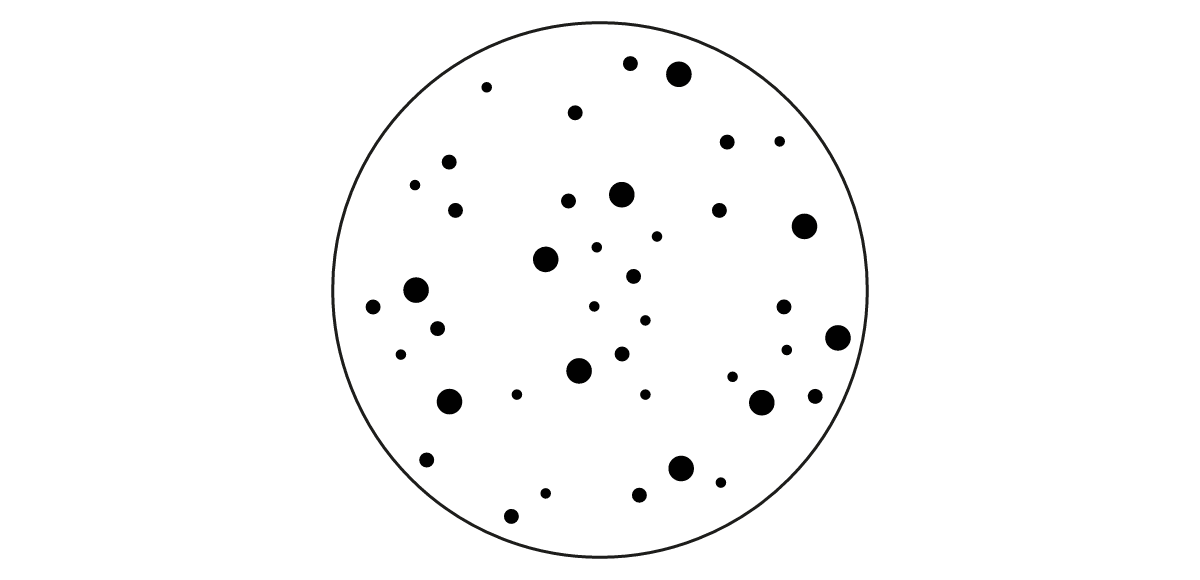Your guide to blackheads
We take a deeper look at one of the most common symptoms of acne: Blackheads. Keep on reading if you wanna know what they are, why you get them, and how you can deal with them.

Blackheads are a very common symptom of acne. If you’re struggling with pimples, breakouts and oily skin from time to time, you’re probably familiar with these tiny fellas.
If you’ve read our post about acne, then you may have an unfair advantage. However, we’ll try to dig a little deeper (into the topic, not the blackheads 😬).
What is a blackhead (a not-so-sciency-but-a-little-bit-sciency explanation)
Very simply put: Blackheads occur when pores get clogged. As with most types of acne related appearances. But what’s actually happening when we’re forming blackheads may need a little more explaining (hence the whole sciency-but-not-super-sciency thing).
Most of us are familiar with pores (and if not, you’ll be in just a minute, we promise!), but the pore is actually just the name for the top of the hair follicle.
Underneath the surface is where all the action happens. You know, down the hair follicles. In each follicle grows a hair (obviously), but the hair follicle is also where you’ll find the sebaceous gland that produces oil (also called sebum - but again, if you already read the acne post, this is like walking on water for you).
Nevertheless, these
glands can get clogged up if you’re prone to producing more oil than your skin can keep track of. Which leads to dead skin cells and oils getting stuck in the opening of the follicle. This then leads to the skin producing a bump (this bump is called a comedone). If the skin over the bump remains closed, we end up getting whiteheads. But if the skin is left open, the pore is exposed to air, causing oxidation, which is when the pore turns black.
And ta-daaa. A blackhead is made.

But.. What causes blackheads?
Well, we kinda already touched upon this while trying to explain what it is and how it’s formed. But when it comes to what actually causes blackheads, there’s more to it than that.
Simply put, buildup of the acne bacteria Propionibacterium acnes (or P. acnes for short) - which leads to excessive sebum production - is the main reason.
But you know, saying “clogged pores” will probably also do, if you ever need to explain this to a friend.
These clogged pores, however, can develop in various ways. If your skin cells don’t shed on a regular basis, the hair follicles can get irritated and also lead to buildup in the pores, as well as increased oil production due to hormonal changes like being a teenager, taking contraception, or while you’re on your period.
As you may have noticed by now, oil production plays a huge role when it comes to blackheads and acne in general. Which means that some people are more prone to developing blackheads than others - and that’s the ones with oily skin and combination skin.
How to deal with blackheads
You may have skipped directly to this part (many people tend to find the “how-can-I-fix-this?”-part of skin concerns more interesting) if you’re already more than familiar with what blackheads are.
We don’t mind, though, ‘cause honestly we’re just here to help.
There’s a ton of products on the market when it comes to fighting blackheads and finding something over-the-counter is easy. Navigating what ingredients and products are beneficial for you is, however, not that easy.
At NØIE, we always recommend a gentle approach to skincare and that also applies to dealing with blackheads. We have two main tips when looking for products to fight blackheads: Use non-comedogenic products and look for salicylic acid or other exfoliating agents.
Non-comedogenic products are products that won’t clog up your pores, which we’ve already established is a good thing when talking about blackheads and acne in general.
Salicylic acid is a beta-hydroxy acid (also known as BHA) derived from willow bark and can help reduce excess sebum in the skin. It also works anti-inflammatory and has exfoliating properties, which is perfect for balancing oil production both for people with acne-prone skin, but generally for those with either oily or combination skin type.
Try a customised skincare routine from NØIE
As we said before, we’re here to help. And to make your life easier (well, your life within the world of skincare at least), we’re saving you the trouble of going through hundreds of salicylic acid products.
Obviously, we’ll recommend a NØIE skincare routine to deal with blackheads. But yeah, we may be a tiny bit biased.
Anywho, our point with this is that there are so many products out there that you may as well get something customised specifically for you and, most importantly, your skin. Take our skin test below and see what we’d recommend for you.